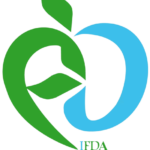Often, symptoms or problems are neglected, and regular health maintenance, such as checkups, colonoscopies, mammograms, etc., are not done. Opioids can also cause problems to the organs in the body, including the brain, bowels, heart, lungs, and bones. Opioids may also consist of street drugs, such as heroin or synthetic fentanyl. People with OUD can find and access support and effective treatment in multiple ways. A person with OUD can have several symptoms, including changes to the way they act, feel, and think.
How to tell if a loved one is misusing opioids
In Mount Laurel, New Jersey, the police department was put in charge and launched outreach events around budget motels where first-responders often administer an overdose antidote. The idea is to connect people with treatment and other services, but advocates prefer police not be in charge of the spending. For Keesha Frye, who oversees the Poarch Band of Creek Indians’ tribal court and sober living facility, using settlement money effectively is personal. “It means a lot to me to get this community well because this is where I live and this is where my family lives,” she said. Opioid medicines travel through the blood and attach to opioid receptors in brain cells.
Hyperbaric oxygen therapy helps treat opioid addiction WSU Insider Washington State University – WSU News
Hyperbaric oxygen therapy helps treat opioid addiction WSU Insider Washington State University.
Posted: Mon, 11 Apr 2022 07:00:00 GMT [source]
When should we start making H5N1 vaccine, and who will make that decision? In short, it’s complicated
- They’ve raised as much as $80,000 a year, but there is always more demand.
- Opioid use disorder and overdoses are serious public health problems in the United States.
- The term “opiates” is used to refer to naturally occurring compounds.
- The overprescribing of prescription pain medications can lead to misuse and abuse of these medications.
- By Julie Scott, MSN, ANP-BC, AOCNPScott is an Adult Nurse Practitioner and freelance health writer with experience in oncology and hematology.
This may look like using the medicine more frequently than your doctor prescribed, using a higher dose than prescribed, or using someone else’s prescription for yourself. Another sign of addiction is seeking the immediate rewards (the “high”) of the drug despite knowing the consequences. Ways to prevent opioid overdose are to improve opioid prescribing, reduce exposure to opioids, prevent illegal opioid use and prescription opioid misuse, signs of opioid addiction and treat opioid use disorder. There are strategies that can help prevent overdose and support the health and well-being of communities. Opioid Use Disorder (OUD), sometimes referred to as “opioid dependence” or “opioid addiction,” is a problematic pattern of opioid use that causes significant impairment or distress. OUD is a medical condition that can affect anyone – regardless of race, gender, income level, or social class.
Symptoms of opioid addiction
Your loved one also is at greater risk of opioid use disorder if they get opioids without a prescription. And using opioids illegally increases the risk of drug-related death. Illegal drugs taken without a prescription may include substances that could be deadly. These drugs also may contain opioids that are much more powerful than medicines prescribed by a healthcare professional, such as fentanyl and carfentanil. People who use opioids illegally often turn to heroin and street fentanyl.
Funding is Directed Toward People Who Are Especially Vulnerable to Overdose
- In 2019, 1.6 million people in the U.S. were diagnosed with OUD and, in 2018, nearly 50,000 people—around 130 people per day—died from overdoses involving opioids.
- Many other treatments are available, including less addictive pain medicines and therapies that don’t involve medicines.
- The person finds it difficult to adjust or eliminate their use in response to problems caused by the drug.
- If you have a first-degree relative (biological sibling or parent) with OUD, you’re more likely to develop it as well.
- Agencies will also address the social determinants of health that contribute to perpetuating an individual’s vulnerability to overdose, such as lack of stable housing, poverty, stigma, and racism.
- Additionally, there are no longer limits on the number of patients with OUD that a practitioner may treat with buprenorphine or tracking of patients treated with buprenorphine required.
Having certain physical health conditions, such as chronic pain, can increase people’s use of opioids and the eventual development of OUD. Heroin is often easier to get than opioids that are meant to be prescriptions. Lately, powders and pressed pills that are illegally sold as heroin, cocaine, crystal meth or even prescription opioids pills actually contain doses of fentanyl that are very dangerous and often deadly.
What is naloxone and how can it help with an overdose?
To some people, the lower payout for tribes corresponds to their smaller population. But some tribal citizens point out that the overdose crisis has had a disproportionate effect on their communities. Native Americans had the highest overdose death rates of any racial group each year from 2020 to 2022. And federal officials say those statistics were likely undercounted by about 34% because Native Americans’ race is often misclassified on death certificates. Drug overdoses overall in 2023 were estimated at 107,543, down from 111,029 in 2022, a 3 percent drop.




